The Opposite of Fate: Memories of a Writing Life Read online
Page 27
I still wonder what book the woman in Ohio read. Was this indeed proof of the apocryphal tale of publishing that puts fear in every writer’s heart—that you’re doomed to fail before you even start? No matter, because I would be the first to agree with the woman in Columbus. My second book was awful. After all, even I couldn’t bear to finish it—that tale about the elixir of immortality. And the third book—about the orphan girl who becomes a con artist—that wasn’t very good either. Thumbs down also on my fourth, fifth, sixth, and seventh books. But the eighth book—eight is always a lucky number—the eighth book is The Kitchen God’s Wife. And regardless of what others may think, it is my favorite.
How could it not be? I had to fight for every single character, every image, every word. And the story is, in fact, about a woman who does the same thing: she fights to believe in herself. She does battle with myths and superstitions and assumptions—then casts off the fates that accompany them. She doesn’t measure herself by other people’s opinions. “What use?” she says. “Then you are always falling, falling, falling, never strong enough to stand up by yourself and go your own way.” She is no innocent. She sees her fears, but she no longer lets them chase her.
And sometimes, in secret, she lets her imagination run wild with hope. She would not mind, not really, if someone came up to her at a literary luncheon and said, “How does it feel to have written your best book second?”
• the best stories •
This was written as an introduction to The Best American Short Stories 1999.
Forty years ago, not long before I turned seven, my father started reading to me from a volume of three hundred sixty-five stories with an equal number of pages.
The stories were supposed to be read in sequence, a tale a day, beginning with a sledding caper on a snowy January 1. They concerned ongoing events in the lives of children who lived in lovely two-story homes on a block lined with trees whose changing leaves reflected the changing seasons. Each of the children had a father and a mother, as well as two sets of grandparents, and these older folk conveyed simple truths while taking out cookies from a hot oven or fish from a cold stream. Each day, the children had small adventures with baby animals, balloons, or bicycles. They enjoyed nice surprises, got into small troubles, and had fun problems that they could solve. They made thingamajigs out of mud and stone and paint, which wound up being the prettiest ashtrays Mommy and Daddy had ever received. Within each of those three hundred sixty-five stories, the children learned a valuable lifelong lesson, which they promised never to forget.
By the middle of the book, I had learned to read well enough to finish a book in one day. And being impatient to know what happened to the children the rest of the year, I polished off the remaining stories in one sitting. On the last day of the year, the children went sledding again, completing the happy circle. Thus I discovered that between January 1 and December 31, those children had not changed much.
I was glad, for that was the year I accumulated many worries, which I numbered on my fingers. One was for the new home we had moved to, the fifth of more than a dozen we would occupy during my childhood. Two was for the dead rat crushed in a trap that my father had showed me, believing this would assure me that it was no longer lurking in my bedroom. Three was for my playmate Rachel, whom I saw lying in a coffin while my mother whispered, “This what happen you don’t listen to mother.” Four was for the operation I had had on my tonsils, which made me think I had not listened to my mother. Five was for the ghost of my playmate, who wanted me to come live with her. Six was for my mother’s telling me that when she was a child her mother had died, and the same sad fate might befall me if I didn’t appreciate her more. Eventually, I ran out of fingers.
That year, I believed that if I could make sense of my worries, I could make them stop. And when I couldn’t, I would walk to the library. I went there often. I would choose my own books. And I would read and read, a story a day.
That girl from forty years ago has served as your guest editor for The Best American Short Stories 1999. I felt I should tell you about my earliest literary influences, because I’m aware that if you scan the table of contents you might suspect that I have been reactionary in my choices. You may wonder whether they are a vote against homogeneity, a vote for diversity in preordered proportions.
This collection holds no such political agenda. The stories I have chosen are simply those I loved most among those given to me for consideration. This is not to say my literary judgment is without personal bias. I am a particular sort of reader, shaped by all kinds of influences—one of them being those bedtime stories of long ago, for I still do most of my reading in bed.
I also now realize that I dearly loved those stories. In fact, I regret that I finished them so quickly that my father no longer had to read them aloud to me each night. For what I loved most was listening to his voice. And what I love most in these twenty-one stories is the same thing. It is the voice of the storyteller.
At the beginning of 1998, the year the stories collected here first appeared in magazines, I found myself in an airport lounge in Seoul, waiting for a connecting flight to Beijing. For reading material, I had brought with me The Best American Short Stories 1992, the volume guest edited by Robert Stone. I remember settling in with a cup of ginseng tea, then glancing up and seeing, with a shock of recognition, a woman who seemed like a younger version of me. She was Asian, I would guess even Chinese-American, and she was with a husband who looked quite similar to mine in height and build and coloring. But what was more striking than these superficial similarities was what she held in her hands: the same teal-blue volume of The Best American Short Stories 1992.
Did she notice me as well? She gave no indication that she did. Meanwhile, I had an urge to run up to her and ask all kinds of questions: Was she a writer? What story was she reading? Why had she picked this book to bring on a long flight to Asia?
I remembered those times my mother used to embarrass me as a child, going up to strangers in public places just because they happened to look Chinese. So I stayed put, reading from my book, then wondering how she could not notice me, our similarity. After all, it wasn’t as though we were reading the same blockbuster novel of the year. It wasn’t a travel book on Asia. It wasn’t even the most recent volume of The Best American Short Stories. So what was it about our lives, our tastes, our choices that had brought us to this literary meeting point in Seoul?
Shortly after I returned home, I was asked to serve as guest editor of this volume. And from October 1998 until February 1999, I read stories, manna from heaven, or wherever it is that the series editor, Katrina Kenison, makes her home. After I had made my selections and sat down to write this introduction, I thought about that woman at the airport. I wondered whether she would one day read these stories and find compatibility with my choices. Or would she pose the hard-nosed literary question: “Huh?”
That is the response I sometimes have after seeing certain movies or plays that others have raved about. In fact, my husband and I have friends we have long associated with a particular film, Babette’s Feast. We recalled their saying it was subtle and unpretentious, artless in the way pure art should be. So we went to see it. Huh? We found it tedious, interminable. Like laboratory mice shocked once, and hence once too often, we learned to ignore any future recommendations for movies from these friends. We did so for about the next ten years. And only recently did we realize we had mistaken this couple for another, who absolutely adore slow-paced Scandinavian films about depression at the dinner table.
Nonetheless, Babette’s Feast had me thinking the other day that the same avoidance principle might apply to people who take on the role of literary arbiter for others—reviewers, critics, panels for prizes, and yes, even guest editors. Such people may have an eye for literary conventions and contrivances, allusions and innovations on the art. But what are their tastes based on? What are their biases? Is part of their aesthetic sense the common prejudice in the arts that an
ything popular is by definition devoid of value? Do they tend to choose work that most resembles theirs? Perhaps those critics who publicly declare, “This is good, and that is not,” ought to present a list of more than just the titles of their most recently published works.
I, for one, would like a résumé of habits, a précis of personality. What movies would they watch twice? Do they make clever and snide remarks, but mostly about people who are doing better than they? When recounting conversations, do they imitate other people’s voices? When sharing a meal with friends, do they offer to pick up the whole tab, split the bill evenly, or apportion it according to what they ordered and how little wine they drank? When a friend of theirs has suffered a terrible loss, do they immediately call, or wait until things have settled down a bit? What are their most frequent complaints in life? What do they tend to exaggerate? What do they downplay? Do they think little dogs are adorable, or appetizers for big dogs? And of course, I would want to know what books they love and what books they loathe and why.
In other words, if you ran into these people at a party, would you even like them? I am being only half facetious. I do think the answers say something about people’s sensibility to life and human nature, and hence their sensibility to stories beyond the surface of craft. The stories we love to read may very well have to do with our emotional obsessions, the circuitry between our brain and our heart, the questions we thought about as children that we still think about, whether they are about the endurance of love, the fears that unite us, the acceptance of irreversible decay, or the ties that bind that turn out to be illusory. In that context, I also think that if Babette’s Feast is your favorite film, then you might not like the stories I have picked.
Anyway, for the woman at the airport, for our friends whose taste in movies was wrongly maligned, and for anyone now taking a flier on my judgment, I will reveal what kinds of tastes I developed in reading between forty years ago and this year.
A worrisome child, I developed an osmotic imagination, and I loved fairy tales for their richness in the grotesque. I read them all—Hans Christian Andersen, the Brothers Grimm, Aesop, whatever was on the library shelf—a book a day, many of them devoured at bedtime, which, my mother said, was how I ruined my eyes and why I had to wear glasses at a young age.
Because my father was a part-time Baptist minister, I also read Bible stories, which I thought were quite similar to fairy tales, for they too contained gory images, gut-clenching danger, magical places, and a sense that things are never as they first appear. By the end of these stories, much had always changed. Kingdoms and seas rose and fell. Humble creatures turned into handsome princes or prophets. Seas parted, a few loaves became food for thousands. And bearded giants lost their heads.
I loved those stories because, along with the horrific, they contained limitless and amazing ways in which people, places, and circumstances changed. They gave me a sense of instability and distrust, but also wonder, that mirrored my own life. I remember one Halloween, being lost on a dark street, then finally seeing my mother, her red swing coat. I flew toward her, hugged the back of her coat, crying for joy because I was no longer lost, only to see a stranger’s startled face looking down at me. As a child, I thought it was a terrifying magic that had transformed my mother into a woman with blond hair. My mother changed quickly in other ways as well. One moment she could be hovering, smothering in her protectiveness. The next, she might toss furniture upside down in a rage. She had a need to cling to and then reject everyone she loved, a quirk in her personality that began with her traumatic childhood. But I would not understand this for perhaps another thirty years. I was simply afraid of the ways she could change, of being caught unawares.
At least with a fairy tale, I could immerse my imagination like my big toe in a tub of hot water and retract it if the story didn’t agree with me at the moment. Part of the thrill, however, was seeing what I could take, guessing what might happen, delighting if I was surprised, decrying the injustice if I was unfairly fooled. Kind creatures turned into genies. People who died or fell down holes or went lost could be transformed into happier beings, or they wound up in lands that nobody else knew existed. In stories, you could hide or escape.
Since my father was a minister and my mother a believer in bad fate, I used to wonder why these things happened. Was it a lesson, a curse, or a trick? Was it a reward for goodness, a punishment for evil? Was it by luck or accident? Or did things happen for reasons we could never know—or would not want to know? I was a child who rode a whirligig of questions and flew out in all directions.
Whatever the case, I was addicted to stories about the morbid: the beheadings, the stonings, the man who was three days dead and stank when he came back to life. These were people with fates worse than mine. So far, at least. But just in case, I wanted to prepare for dangers that might await me.
Around this same time, I discovered a book at home that was useful to me in this regard. It was a medical textbook my mother was studying so she could become a licensed vocational nurse. The textbook concerned medical anomalies, and on its pages were descriptions and photographs of people with acromegaly, elephantiasis, hirsutism, leprosy, superfluous or missing appendages, deformities that vied with Ripley’s Believe It or Not for instilling open-jawed disbelief.
I tried to imagine the lives of those people, how they felt, their thoughts as they stared back at me through the photographs. I imagined them before they had their disease. I imagined them cured. I imagined my taking them to school, all the kids screaming in terror, while I alone remained calm, a true friend. I imagined them changing into genies, princes, and immortals. I imagined I might become just like them, plagued and miserable, but soon to be transformed into someone else. These people were my imaginary playmates. Their consciousness, I believed, was mine. And those notions were among the first stories I made up for myself.
Like many children, I read to be scared witless, to be less lonely, to believe in other possibilities. But we all become different readers in how we respond to books, why we need them, what we take from them. We become different in the questions that arise as we read, in the answers that we find, in the degree of satisfaction or unease we feel with those answers. We differ in what we consider about the real world and the imaginary one. We differ in what we think we can know—or would want to know—and how we continue to pursue that knowledge.
In the hands of a different reader, the same story can be a different story.
I believe that now, although in college I allowed myself to believe otherwise. Back then I had reached a point where I believed good taste was an opinion held by others, namely the designated experts. I was an English major, and my sophomore year I wrote a paper on Hemingway’s The Sun Also Rises. Although I thought it was well written, I did not like it much, the cynicism, the fact that by the end the characters had not changed much—which was the point, but one I did not find all that interesting. I said so in my paper, and the following week my professor chose to read it aloud in class. He said it was remarkably different from papers he had read in all his years of teaching. I blushed, thinking this was high praise. And then he started to read my sentences in a tone that became increasingly less benign. Soon his face was livid, as he gasped between each of my paragraphs: “Who is this writer to criticize Hemingway, the greatest American writer of our century? This writer is an idiot! This novel deserves a better reader!” If this writer had had the means, she would have killed herself on the spot.
The next year, in another English class at another college, the same novel was assigned. This time I wrote a paper that noted the brilliant characterization, how despite the panorama of events and the opportunities afforded the characters, nothing much changed in their lives, and how this so convincingly captured the realism of ennui. The book represented the pervasive American sense of a lost generation whose lives, singly or together, held no hope or direction. My paper received high praise.
By the time I graduated, I was sick of read
ing literary fiction. My osmotic imagination had changed into one with filters, lint traps. I thought that literary tastes were established norms that depended on knowing what others more expert than I thought was best.
For the next twelve years, I read an occasional novel. But I did not return to my habit of reading a story a day until 1985. By then I had become a successful but unhappy person, with work that was lucrative but meaningless. I was in one of those situations that cause people to join a religious cult or spend a lot of money on psychotherapy, or take up the less drastic and more economical practice of writing fiction.
Since I was a beginning writer, I believed that the short form was the easier one to tackle. It was the IRS approach to writing: Use the short form if you have less to account for and the standard amount to withhold. From a remainder table at my local bookstore, I picked up The Best American Short Stories 1983, the volume coedited by Anne Tyler. I was just starting to write short stories. I had been raised by a mother with impossibly high standards. This was the book for me, the best. With suggestions from my more literary-minded friends, I read short story collections, and the ones I targeted first were by women. Of course, I read fiction by men as well, even Hemingway, which I reread with new appreciation, but mostly for his clean prose style. I was especially interested in fiction by women, because almost all the literary works I had read as an English major were by men, the one exception being Virginia Woolf. I discovered that stories by women included more stories about women, and I was startled to read, for the first time perhaps since Jane Eyre, so many books with a sensibility sympathetic with mine. Many of their voices were intimate, involving questions, ambiguities, and contradictions common among us, yet they were thoughts and emotions I had not seen expressed in other stories I had read.

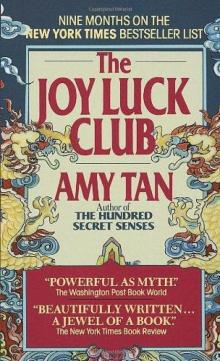 The Joy Luck Club
The Joy Luck Club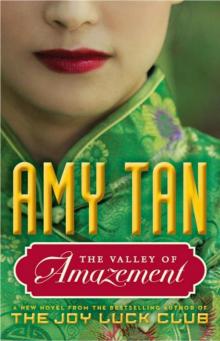 The Valley of Amazement
The Valley of Amazement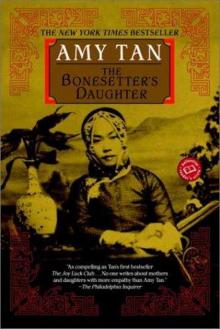 The Bonesetter's Daughter
The Bonesetter's Daughter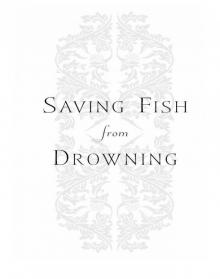 Saving Fish From Drowning
Saving Fish From Drowning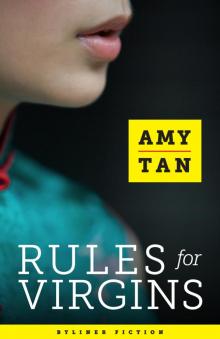 Rules for Virgins
Rules for Virgins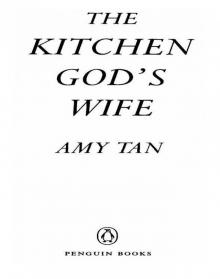 The Kitchen God's Wife
The Kitchen God's Wife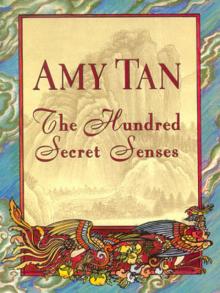 The Hundred Secret Senses
The Hundred Secret Senses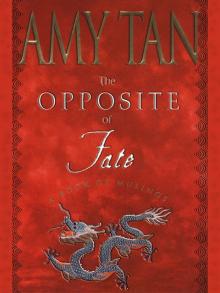 The Opposite of Fate: Memories of a Writing Life
The Opposite of Fate: Memories of a Writing Life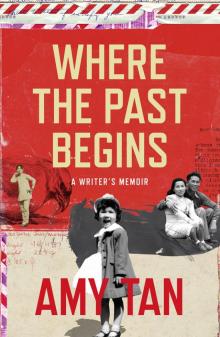 Where the Past Begins
Where the Past Begins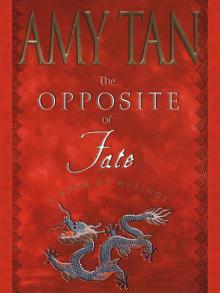 The Opposite of Fate
The Opposite of Fate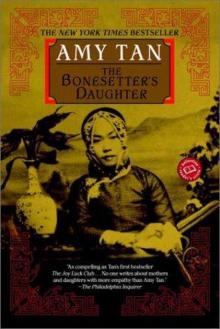 (2001) The Bonesetter's Daughter
(2001) The Bonesetter's Daughter